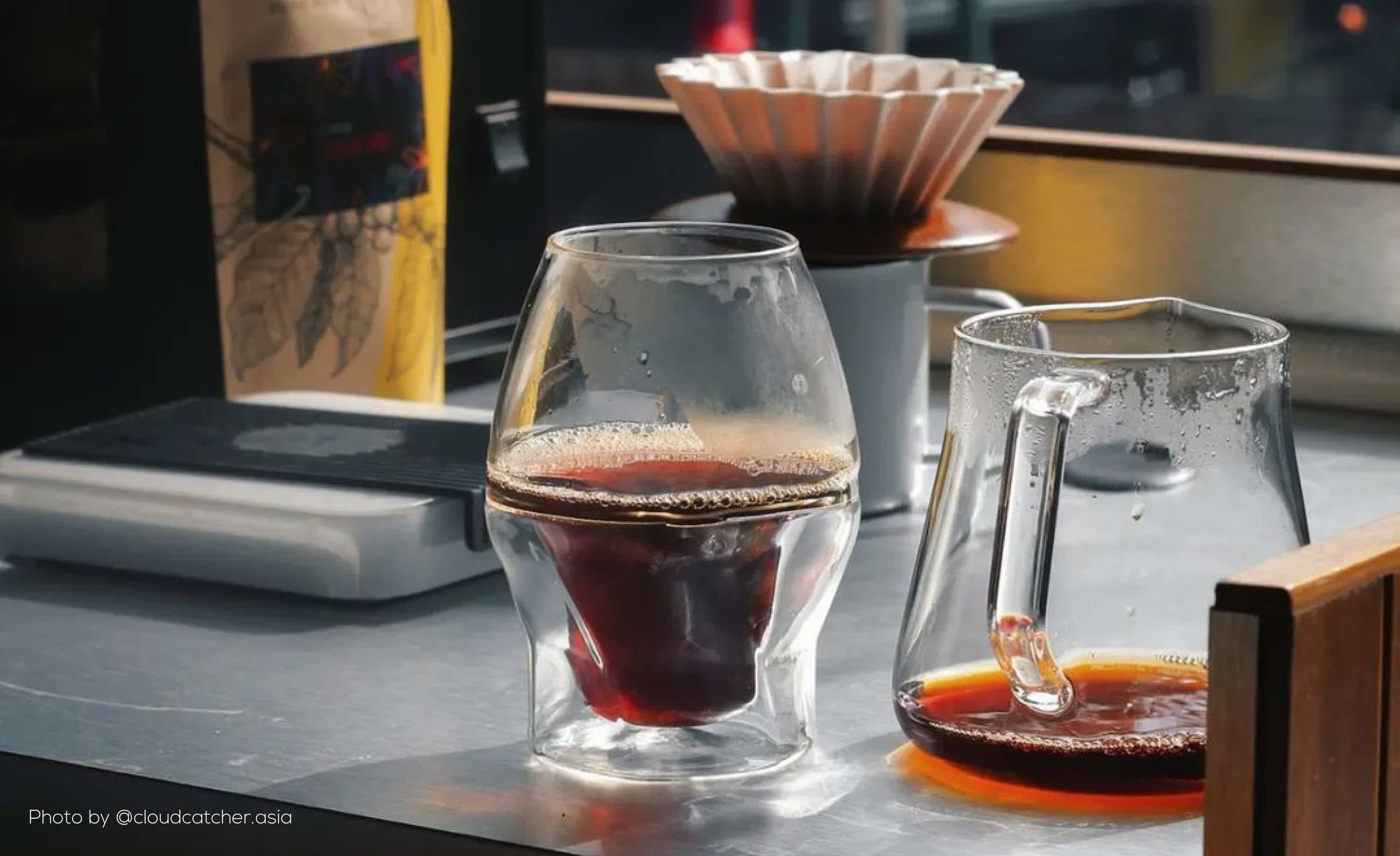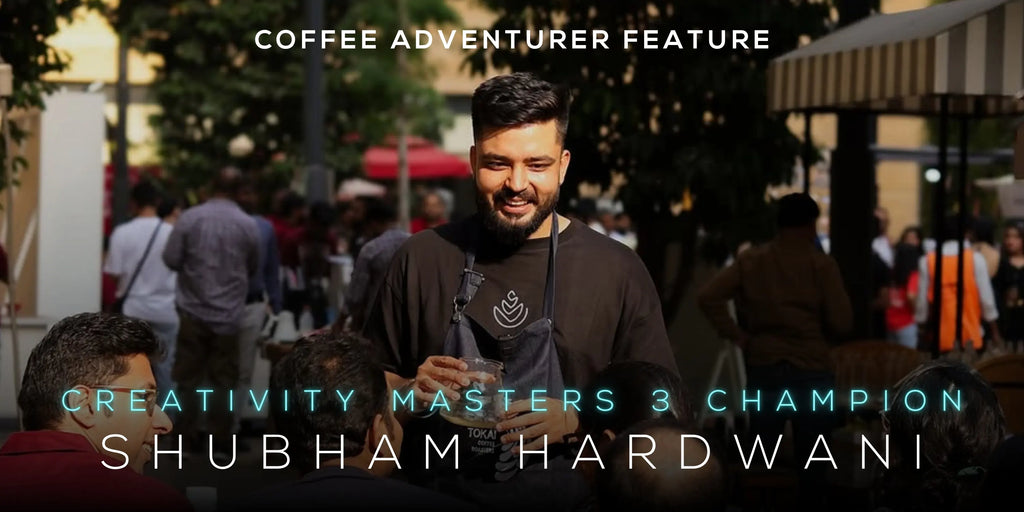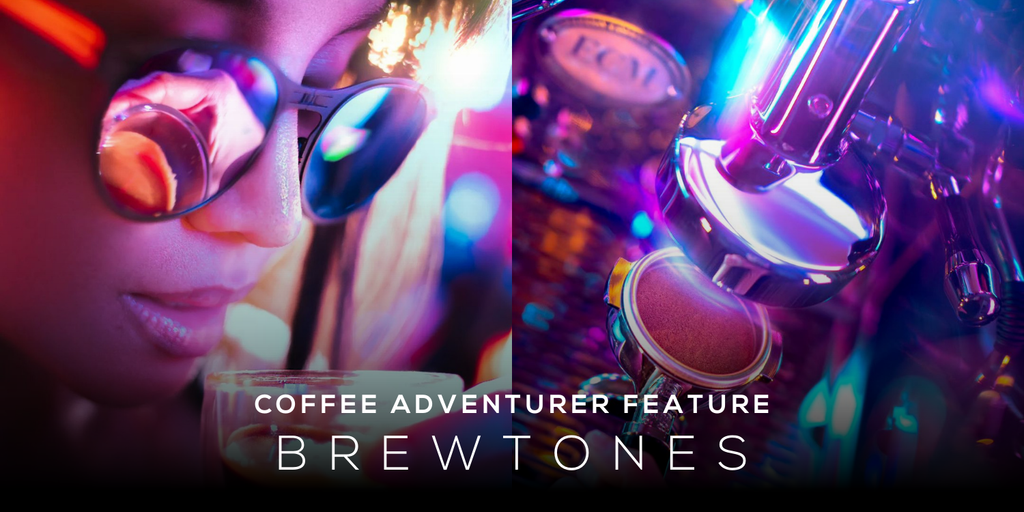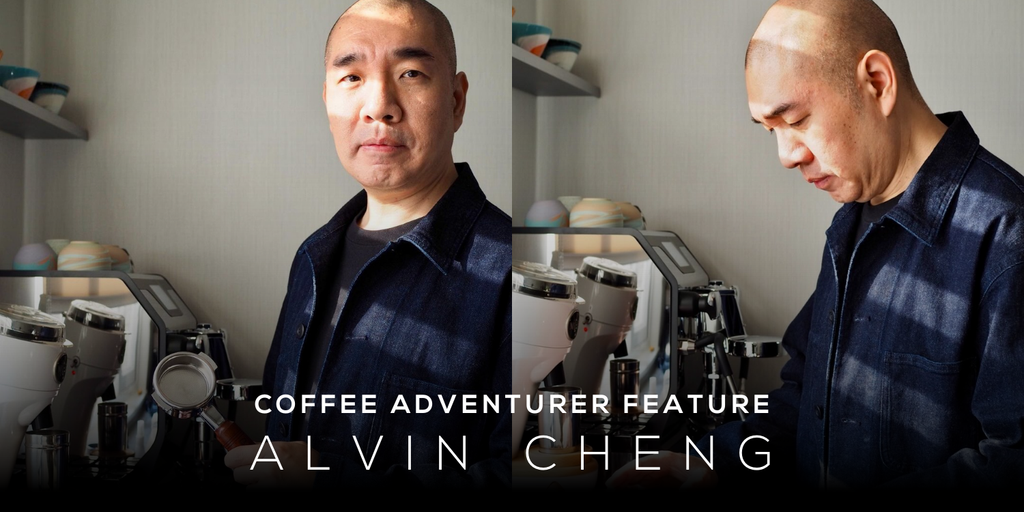
Which brew do you do?
Not long ago, brewing method options were simpler and way more straight forward. But thanks to more progressive and experimental coffee enthusiasts, we have an extensive range of brewing methods to choose from that offer different ways of experiencing your coffee's flavors.
Let’s get one thing straight though. Here at ICOSA Brewhouse, we believe that any brewing method can produce a great tasting cup of coffee, because different brewing methods can bring out specific flavors and aromas of your beans. For that reason, we decided to create this brewing method guide to give you insight into the many ways you can brew coffee — from what’s been tried and tested over the decades to some new-age trends that you may want to experiment with!
3 Brewing Processes + Methods

Image from Mistobox
To have a better understanding of different brewing methods, we’ve categorized them based on the key process involved (immersion, filtration, and pressure).
What makes coffee so exciting is the fact that new brew methods and techniques keep popping up every few months, and for that reason there may be some methods that aren’t listed. What’s important is getting a good understanding of each process and knowing how each approach can help to bring out the best of your coffee’s flavor.
1. Brewing by Immersion

It’s in the name. Brewing by immersion simply means that ground coffee is left immersed in water and steeped for a certain amount of time before it is consumed. This means that the primary factors from your brew recipe that you should focus on are (1) the grind size, (2) the water-to-coffee ratio and (2) the brewing time. These key factors affect the extraction process and therefore impact the flavor of your coffee.
1.1 French Press

Recognized as a tried-and-tested (not to mention, convenient) way of making full-bodied coffee, French press is an easy favorite because it often results in having a stronger flavor because the grounds are in direct contact with the water for the entire brewing process. It involves letting coarse ground coffee (sea salt sized grounds) soak in water for a few minutes and then using a metal filter plunger to press down the grounds. French press is a favorite among households because of its convenience and the fact that you can conveniently cater to more than one cup depending on the size of your French press. Unlike other methods, such as pour over and AeroPress, there is little to no variation in the ways you can craft your brew, but the upside is that you can consistently produce great tasting cups since the French Press brew method is so simple.
New to French Press? Check out our French Press brew guide here.
1.2 Cupping

Image from Fellow Products
Cupping is seen as the preferred method by coffee experts to experience the true taste of coffee and serves as a global standard for professionals to compare and grade different coffees. If you’ve ever wondered where the flavor notes written on the outside of your coffee bag come from, it usually happens during the cup tasting process. It’s a standardized method that involves pouring 14g of coffee grounds into a specific sized ceramic ‘cupping bowl’, steeping the grounds for 4 minutes, and removing any excess coffee grounds that are floating on the surface. Then instead of simply drinking the brewed coffee, special ‘cupping spoons’ (similar to a large soup spoon) are used to slurp and taste the coffee.
This is why cupping is not really seen as a household method of brewing, but more for experts and professionals — a way to sample and compare coffees, particularly for roasters, farmers, and traders. For the more serious at-home coffee drinkers, it’s a great way to experiment with different coffees and see how the flavor profiles compare between different origins and different roasts!
1.3 Siphon

Image from coffeebreaklovers.com
Also known as ‘vacuum’ brewing, siphon can be such a fun and engaging way of brewing coffee if you don’t mind all the fuss. It’s said to be invented all the way back in the 1800s, and looks more like a chemist’s tool rather than your traditional brewer. It involves adding coffee grounds to the upper vessel of the siphon pot. The heat from below then exerts pressure into the hot water, which then immerses the coffee. Once heat is removed, gravity pulls the brewed coffee back down into the bottom vessel. Siphon does tend to be a more advanced method of brewing since it’s less forgiving if your timing or brew recipe is off, but once mastered, it produces some of the best coffee you’ll ever experience. We recommend it if you’ve got some extra time on your hands and if you’re after very clean and full-flavored coffee — not to mention if you happen to enjoy doing experiments and following instructions down to the smallest detail.
1.4 AeroPress
Popular among traveling coffee enthusiasts, AeroPress is a quick, easy, and portable way of brewing coffee. The AeroPress equipment itself comes in 3 parts: a plunger, a brew chamber, and a coffee basket. All you really have to think about is having the right water temperature, the right size coffee grounds, and the right coffee-to-water ratio. You can get really good coffee in as little as 60 seconds and most would argue that AeroPress is one of the easiest brewing methods to learn because you don’t have to worry about pouring technique like most pour over methods–simply grind, steep, and press, it’s that sample! As an added bonus, it’s a breeze to clean. With an AeroPress, you can have regular coffee, cold brew, or even an ‘almost espresso’ whether you’re at home or on the road.
Check out our in depth AeroPress brew guide for beginner and expert tips.
1.5 Steeped Coffee Bag

Image from sprudge.com
Pour, dunk, steep, and drink. Borrowing from the concept of steeped tea bags, we’ve also seen a rise in specialty coffee bags that combine signature blends and convenience. While this may not be every coffee connoisseur’s cup of tea, there’s no denying the ease of using a steeped coffee bag, especially if you don’t have the time or energy to go through an extensive brewing process. Stepped coffee bags are as good as it gets when you don’t have the space to carry your travel coffee gear with you. Just make sure to do your research when it comes to quality coffee bags that make use of specialty roasted coffee rather than your run-of-the-mill commercial grocery store brands.
1.6 Cold Brew

No, it’s not iced coffee. Cold brew is in a league of its own and dare we say, one of our personal favorites here at Icosa Brewhouse (see: Arctic Cold Brew Coffee System). Making cold brew involves steeping fresh coffee grounds in cold filtered water for a long period of time — usually 10 hours or more. It makes use of cold water and no, it’s not just hot coffee that you put in the fridge to cool. Cold brew does require patience due to the longer extraction period, but the reward is a strong, intense, and unique tasting coffee with a smooth finish. Despite the prolonged brewing time of cold brews, there’s less acidity and bitterness in the resulting cup compared to hot brewing methods because heat reacts to the coffee’s oils and acids differently.
You’ll also be able to taste the origins of your coffee through this method more clearly, with more delicate floral and fruity notes staying intact. Another bonus is that you get to store cold brew for up to 2 weeks and it’s guaranteed to taste fresh — not to mention, it’s a great pick-me-up on those hot summer days.

Say hello to your new coffee e-zine for the most interesting news, tips, and trends in the world of coffee.
2. Brewing by Filtration/Gravity

Filter coffee is one of the oldest known coffee brewing methods. That said, even if it’s the “oldest” doesn’t mean there aren’t new ways (and tools) of doing it. There’s really not much to it — brewing by filtration involves using a filter over a pot, adding the coffee grounds, and pouring hot water as the water drips down into the cup (hence the ‘gravity’ aspect). Filter brewing can be done both manually by hand and automatically using a machine. Unlike immersion brewing, the water is only in contact for a brief time as it flows through the coffee and drips out the bottom of the conical filter, and there is greater room for creativity and flexibility in order to extract the flavors from your beans–technique (ex. blooming, pouring technique, timing), gear (ex. hario, kalita wave), and filter type (ex. metal, paper, glass) all play a part in how your finished brew will taste.
2.1 Automatic Drip

Easy, fast, and no fuss — the auto-drip is the most recognized brewing method by filtration, perhaps even the most popular way to brew coffee. It can be used at home, offices, restaurants, and what have you, especially since it can serve a larger group of people in no time. It uses a showerhead style water dispenser to pour hot water evenly over the coffee grounds. What you need to consider in doing an automatic drip is the type of grind needed (medium-fine grind is recommended) and the quality of your brewer (Moccamaster being one of the more well-known high quality brands). Higher quality machines include features like temperature control, pre-infusion ‘blooming’, and auto drip stop. Doing a fair amount of research should help you in landing an automatic drip brewer that’s worth investing in.
2.2 Pour Over
The most popular way of doing manually filtered coffee is using a simple pour over. What’s great about pour overs is how you can control the resulting flavor of your coffee, as well as experiment in teasing out the subtle flavors to get the coffee you want. Pour overs make use of a cone, a filter, scale, timer and a gooseneck kettle. Gooseneck kettles are a key tool for pour over because it offers greater control over your pouring technique (you could use a regular kettle, but it’s very difficult to control the pour). Brewing with pour over often results in a clean tasting and light-bodied cup thanks to the shorter brewing time and paper filters which tend to remove the coffee oils from your final brew (alternatively, there are metal and even new glass filters which allow you to retain more of those coffee oils). It may take some practice to nail the pouring technique and the timing, but most pour over tools are affordable and very accessible, making it the most popular entrypoint for new coffee enthusiasts to learn manual brewing.

Check out our in depth Pour Over brew guide for beginner and expert tips.
2.3 Drip Bag

Image from kurasu.kyoto
Another easypeasy and portable way of brewing coffee is by using drip coffee bags. Drip bags are essentially single-serve, disposable pour overs and usually include makeshift paper handles that allow you to suspend the bag over your cup. Just like pour over, you slowly pour hot water over the grounds. While drip bags have been around since the 1990s, more and more specialty coffee roasters are coming on board with this type of brewing method to make specialty coffee more convenient and more accessible to coffee lovers who are always on the go and don’t want to lug around a pour over cone, filters, and a scale. If you’re completely new to pour over coffee brewing, this makes for a great way to enter the world of pour over since it doesn’t require any fancy gear, and still produces excellent results! Simply add hot water and you’re all set.
2.4 Chemex
Looking like a tool straight from a mad scientist's lab, the Chemex brewer allows you to manually brew coffee in style and in large batches. The Chemex works just like any other pour over brewer, but the key difference is that Chemex uses a special filter that’s about 20-30% heavier than normal paper filters. Chemex involves pouring hot water over coffee grounds with the brewed coffee then dripping into the bottom of the flask. Chemex tends to require more skill than regular pour over methods because it’s less forgiving if your brew recipe is off, but the resulting cup is much cleaner and clearer thanks to the thicker paper filters. The flask doubles as a carafe, which you can use to serve coffee to family and friends. As with any other pour over tools, it’s important to master the fine details of grind size, water temperature, and coffee-to-water ratio in order to achieve that perfect cup (or cups).
Check out our in depth Chemex brew guide for beginner and expert tips.
3. Brewing by Pressure

Brewing coffee by means of pressure involves forcing hot water through finely ground coffee within a confined brewing chamber. The brewing time (i.e. the time that the coffee is in contact with water) is much shorter compared to immersion and filter brew methods, but the level of extraction is much higher thanks to the finer grind combined with the high pressure (similar to how a pressure cooker works). With the highest extraction rate compared to immersion and filter brew methods, the result is a very intense tasting brew with a heavy body.
3.1 Espresso

Image from beanbox
Espreso-making tools and equipment come in all forms and sizes. You can do it using a machine or even manually using recently released tools like the Flair or Cafelat Robot. But regardless of its form, the basic process remains the same. Making an espresso involves pressurized water (typically 9 bars of pressure) pushing through a chamber filled with finely ground beans (aka the ‘coffee puck’), which then passes through a filter, resulting in a concentrated shot of sharp, fully flavored espresso. From there, you can either drink that shot directly, dilute with more water (for an americano or long black), add in milk to create an array of milk-based coffee drinks (ie. piccolo, macchiato, cappuccino, flat white, etc), or even use as a base for some refreshing coffee cocktails (espresso tonic, espresso martini).
The key to a great tasting cup of espresso is to have consistent finely ground coffee; things like irregular grounds or ‘boulders’ can cause under/over extraction which can lead to a very sour or bitter cup. For best results, look for grinders with stainless steel conical or flat circular burrs that are specifically designed for espresso–these will give you the super finely ground coffee beans that work best with any espresso brewer. If you have the budget for it, we definitely recommend an automatic grinder for this because the manual option tends to require a fair amount of strength.
3.2 Moka Pot
Don’t want to invest in an espresso machine to make your shot? Moka pots would be the next best thing since you can easily make your espresso using a regular stove top burner. So what is a Moka pot? For one, it’s made of heavy stainless steel and consists of 3 chambers. Water from the bottom chamber is boiled on the stove and the resulting steam pushes the water up through the coffee grounds found in the middle chamber, which then drips and collects in the topmost chamber. What you get is a strong espresso-style coffee that you can drink as-is or mix with milk or more water. Although it doesn’t produce the same shot as an espresso machine because it doesn’t involve the same level of high pressure, it's the closest you’ll get to brewing espresso with all the convenience in a small form factor. One thing to take note of is the type of grind. You’ll want something in between the super fine grind of espresso and the fine grind of drip coffee. Moka Pot is pretty self-contained and doesn’t require any additional skill like the pour over method, but using a Moka pot can also be a series of trial and error of under- and over-extracting until you find the best taste for you. Once you get the hang of it, it’s a great option to produce consistent, great tasting espresso based drinks.
New to Moka Pot? Check out our Moka Pot brew guide here.
Given all of these options, what brew would you opt to do?
There are many factors to consider in choosing the right kind of brew: affordability, convenience, space, lifestyle, and so on. When you decide to start with a new method of brewing, we recommend doing proper research and getting recommendations from trusted coffee-loving friends and colleagues.
Also remember that you don’t need to get the most expensive equipment to achieve a great tasting brew. Regardless of which brew method you’d go for, always start with the best quality beans and make sure that you’re also using the right grind size for that specific method. Double check the water that you’re using and have the right tools to measure temperature and coffee volume. Once you have those down pat, you’re well on your way to enjoying a delicious, hard earned cup of coffee.



